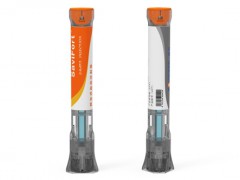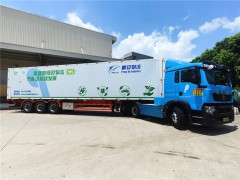據(jù)伍德麥肯茲1月20日?qǐng)?bào)道,能源危機(jī)、金屬超級(jí)周期、轉(zhuǎn)型成本挑戰(zhàn)、更高的投資和100美元/桶價(jià)格的預(yù)期,在經(jīng)歷了一年的戲劇性復(fù)蘇之后,2022年能源和自然資源方面發(fā)展將如何?這里有五個(gè)主題,以及相關(guān)的風(fēng)險(xiǎn)。
一是能源危機(jī)有解決辦法嗎?
今年(北半球)冬天,歐洲和亞洲的天然氣和電力價(jià)格可謂“眾望所歸”。
對(duì)于天然氣來(lái)說(shuō),完美的風(fēng)暴導(dǎo)致了自去年第三季度以來(lái)的創(chuàng)紀(jì)錄運(yùn)行。歐洲電力市場(chǎng)也受到了類(lèi)似事件的沖擊,高漲的天然氣價(jià)格加劇了因產(chǎn)能閑置、發(fā)電廠(chǎng)可用性受限、低水電以及向可再生能源轉(zhuǎn)變,導(dǎo)致了緊張情緒。一個(gè)糟糕的冬天將推動(dòng)天然氣和電力價(jià)格在已經(jīng)接近歷史水平的情況下,進(jìn)一步走高。
價(jià)格將在春季回落,但天然氣市場(chǎng)在結(jié)構(gòu)上比疫情爆發(fā)之前更緊張。受批準(zhǔn)的項(xiàng)目減少,意味著從2022年到2025年,每年新增的液化天然氣供應(yīng)量平均僅為120萬(wàn)噸,不到過(guò)去四年的一半。預(yù)計(jì)歐洲和亞洲液化天然氣價(jià)格將穩(wěn)定在2015年至2020年期間的平均價(jià)格兩倍以上,直到2026年新的供應(yīng)量投入使用。
歐洲的電力價(jià)格也將繼續(xù)高于危機(jī)爆發(fā)前,問(wèn)題的根源在于,隨著時(shí)斷時(shí)續(xù)的可再生能源獲得市場(chǎng)份額,而靈活的天然氣和燃煤電廠(chǎng)卻被擠出市場(chǎng),靈活性受到了擠壓。世界各地的其他市場(chǎng)也面臨著同樣的挑戰(zhàn),而答案就在于一系列靈活的技術(shù),包括電池存儲(chǔ)。
風(fēng)險(xiǎn)是什么?需求的破壞以及天然氣和電力的高價(jià)格阻礙了經(jīng)濟(jì)的復(fù)蘇,可承受性成為一個(gè)主要的政治問(wèn)題。人們對(duì)“將天然氣和電力作為可靠、穩(wěn)定和可負(fù)擔(dān)的能源來(lái)源”作為能源轉(zhuǎn)型核心的看法受到了質(zhì)疑。在天然氣價(jià)格持續(xù)高漲的地區(qū),原料成本向綠氫傾斜,而不是向藍(lán)氫傾斜。
二是金屬超級(jí)周期遭遇逆風(fēng)?
盡管面臨著新冠肺炎疫情引發(fā)政府緊急刺激措施退出的不利影響,但從危機(jī)中恢復(fù)的強(qiáng)勁經(jīng)濟(jì)復(fù)蘇將在2022年繼續(xù)。預(yù)計(jì)全球GDP增速將略低于4%,低于2021年5.5%的亮麗成績(jī)。
復(fù)蘇的經(jīng)濟(jì),特別是對(duì)商品的超常需求已經(jīng)擠壓了供應(yīng)鏈,并將能源和金屬方面的幾乎所有商品價(jià)格提升到接近創(chuàng)紀(jì)錄水平。關(guān)鍵過(guò)渡金屬,包括銅、鋁、鎳、鋰和鈷市場(chǎng)也在著眼于更長(zhǎng)遠(yuǎn)的發(fā)展,預(yù)計(jì)隨著低碳基礎(chǔ)設(shè)施在全球推廣,對(duì)去碳化的投資將會(huì)持續(xù)。
轉(zhuǎn)型需求將導(dǎo)致金屬市場(chǎng)出現(xiàn)結(jié)構(gòu)性緊縮,并引發(fā)對(duì)礦山供應(yīng)的大規(guī)模投資,但這種轉(zhuǎn)型需求還需要幾年時(shí)間。在短期內(nèi),市場(chǎng)有趨向于過(guò)剩,因此在2022年有反彈勢(shì)頭消失的危險(xiǎn)。
有什么風(fēng)險(xiǎn)?奧密克戎的影響發(fā)出警示,疫情可以帶來(lái)經(jīng)濟(jì)反復(fù)挫折。美聯(lián)儲(chǔ)縮減量化寬松政策,提高利率以對(duì)抗通貨膨脹(從零到年底高達(dá)2%)。關(guān)鍵金屬價(jià)格的持續(xù)高企,減緩了低碳經(jīng)濟(jì)的推廣。
三是資本紀(jì)律會(huì)讓位于機(jī)構(gòu)性投資嗎?
在今天的價(jià)格環(huán)境下,石油和天然氣、金屬、鐵礦石和煤炭生產(chǎn)者正在產(chǎn)生創(chuàng)紀(jì)錄的自由現(xiàn)金流。然而,投資者繼續(xù)要求將現(xiàn)金用于償還債務(wù)或返還給股東。在勘探開(kāi)發(fā)和采礦業(yè),資本支出接近多年來(lái)低點(diǎn)。
2022年,投資將從危機(jī)低點(diǎn)回升,盡管人們并不期望迅速轉(zhuǎn)向增長(zhǎng)。低碳化經(jīng)營(yíng)正迅速成為所有行業(yè)的優(yōu)先事項(xiàng)。力拓集團(tuán)就是一個(gè)例子,在2022年,該公司將首次撥款5億美元(占支出的6%)用于降低運(yùn)營(yíng)成本,并計(jì)劃在2030年前,每年將這一數(shù)字翻倍。
對(duì)可再生能源機(jī)構(gòu)性投資已經(jīng)有了強(qiáng)勁上升趨勢(shì),預(yù)計(jì)2022年全球太陽(yáng)能發(fā)電量將增加17%,風(fēng)能將增加11%。上游石油和天然氣支出將增長(zhǎng)約9%,突破4000億美元,增長(zhǎng)最初由國(guó)家石油公司主導(dǎo);今年晚些時(shí)候,國(guó)際石油公司將增加對(duì)短周期項(xiàng)目投資,特別是美國(guó)二疊紀(jì)盆地項(xiàng)目。當(dāng)然,大石油公司將繼續(xù)把越來(lái)越多的可支配支出用于低碳機(jī)會(huì)。
2022年,金屬和采礦業(yè)前景最不樂(lè)觀(guān)。該行業(yè)的項(xiàng)目是稀缺的,并購(gòu)是加強(qiáng)投資機(jī)會(huì)的必要第一步。但要實(shí)現(xiàn)交易,在價(jià)格反彈后,買(mǎi)賣(mài)價(jià)差可能過(guò)大。
風(fēng)險(xiǎn)是什么?更高的成本扼殺了可再生能源的投資和增長(zhǎng)速度。大型企業(yè)、獨(dú)立企業(yè)和私營(yíng)企業(yè)對(duì)上游投資持續(xù)不足,將市場(chǎng)份額讓給了國(guó)家石油公司,增加了十年后石油和天然氣價(jià)格波動(dòng)的可能性。中國(guó)鞏固了其在關(guān)鍵過(guò)渡金屬供應(yīng)鏈上的主導(dǎo)地位。
四是成本上升能否阻擋能源破壞者的步伐?
COP26的成功,特別是第6條和各種凈零承諾,為必要的政策支持和投資激勵(lì)鋪平了道路。在美國(guó),這包括美國(guó)對(duì)碳捕集與封存的45Q稅收減免(間接地幫助了藍(lán)氫發(fā)展)和有利于綠氫項(xiàng)目排放相關(guān)支持。飆升的歐盟排放交易計(jì)劃價(jià)格,現(xiàn)在超過(guò)100美元/噸,這也是另一個(gè)促進(jìn)因素。
在監(jiān)測(cè)了200種處于不同發(fā)展階段的新興技術(shù)后,最成熟的技術(shù),包括太陽(yáng)能、陸上和海上風(fēng)能,已經(jīng)能夠吸引大筆資金來(lái)擴(kuò)大規(guī)模。電動(dòng)汽車(chē)(全球銷(xiāo)量在2021年翻了一番之后,預(yù)計(jì)將增長(zhǎng)31%,達(dá)到850萬(wàn)輛)、儲(chǔ)能(包括電動(dòng)汽車(chē)電池)和電網(wǎng)終端(包括最重要的電動(dòng)汽車(chē)充電基礎(chǔ)設(shè)施)仍有商業(yè)化的挑戰(zhàn),但正逐漸接近主流。
其他一些不太成熟的技術(shù),對(duì)實(shí)現(xiàn)凈零排放目標(biāo)也很關(guān)鍵。在那些將成為2022年資本市場(chǎng)焦點(diǎn)的項(xiàng)目中,包括氫氣(項(xiàng)目管道在2021年翻了一番)和CCS。
風(fēng)險(xiǎn)是什么?投入成本和工資的上漲、供應(yīng)鏈的挑戰(zhàn)和物流阻礙了一系列低碳技術(shù)的推廣和發(fā)展。電解器制造能力已經(jīng)在快速提升,但卻難以跟上氫氣的指數(shù)式增長(zhǎng)。
五是油價(jià)會(huì)上升到100美元/桶以上嗎?
至少在2022年的任何持續(xù)時(shí)期都不太可能出現(xiàn)。在歐佩克+的精心管理下,預(yù)期市場(chǎng)在2022年將再次恢復(fù)平衡。到第三季度,需求增加450萬(wàn)桶/天,回到疫情爆發(fā)前1億桶/天的水平,而供應(yīng)增加480萬(wàn)桶/天,大約一半來(lái)自歐佩克+。隱含庫(kù)存顯示2022年第一季度出現(xiàn)過(guò)剩,預(yù)計(jì)不會(huì)出現(xiàn)供應(yīng)短缺。預(yù)測(cè)布倫特平均為70美元/桶,略低于2021年。
風(fēng)險(xiǎn)是什么?由于新冠肺炎疫情及其變異病毒,我們已經(jīng)將2022年的需求削減了近10萬(wàn)桶/天。歐佩克預(yù)計(jì)地緣政治因素不會(huì)在2022年解除,但多達(dá)100萬(wàn)桶/天的原油可能在幾個(gè)月內(nèi)重返市場(chǎng)。但地緣政治因素可能會(huì)給市場(chǎng)帶來(lái)沖擊。
王佳晶 摘譯自 伍德麥肯茲
原文如下:
Big themes in 2022 for energy and natural resources
The energy crisis, the metals supercycle, transition cost challenges, higher investment and the chances of US$100/bbl oil
After a year of dramatic recovery, what will shape the world of energy and natural resources in 2022? Here are five themes, and associated risks.
1. Is there a fix for the energy crisis?
Gas and power prices in Europe and Asia are in the lap of the gods this (northern hemisphere) winter.
For gas, the perfect storm has led to a record run since Q3. Power markets in Europe have been hit by a similar chain of events – high gas prices added to system tightness caused by capacity retirements, constrained plant availability, low hydro and the shifting mix towards renewables. A bad winter will push gas and power prices – already near record levels – higher still.
Prices will fall back in the spring, but the gas market is structurally tighter than before the pandemic. Fewer sanctioned projects mean new LNG supply will average just 12 MT a year from 2022 to 2025, less than half that of the last four years. We expect LNG prices in Europe and Asia to settle at more than double the average for prevailing prices between 2015 and 2020 until new supply comes onstream in 2026.
European power prices, too, will remain higher than pre-crisis. The root problem is a flexibility crunch as intermittent renewables gain market share while flexible gas and coal plant are squeezed out of the mix. Other markets around the world face the same challenge, and the answer lies in a range of flexible technologies including battery storage.
The risks? Demand destruction and high prices for gas and power hinders the economic recovery and affordability becomes a major political issue. The perception of gas and power as reliable, stable and affordable sources of energy central to the energy transition comes into question. Feedstock costs tilt the field in favour of green hydrogen over blue in regions with persistent high gas prices.
2. Headwinds for the metals supercycle?
The strong economic recovery from the crisis continues in 2022 – despite a headwind from the withdrawal of pandemic-induced, emergency government stimulus. We expect global GDP growth of just under 4%, below 2021’s stellar 5.5%.
The resurgent economy – specifically, the extraordinary demand for goods – has squeezed supply chains and lifted almost all commodity prices in energy and metals to near-record levels. Markets in key transition metals – including copper, aluminium, nickel, lithium and cobalt – are also looking to the longer term, anticipating sustained investment in decarbonisation with a global roll-out of low-carbon infrastructure.
We believe a metals supercycle is coming, just not yet. The transformative transition demand that will lead to structural tightening in metals markets and trigger massive investment in mine supply is some years away. In the short term, we see markets trending to surplus so there’s a danger the steam comes out of the rally in 2022.
The risks? The impact of Omicron is a reminder that Covid-19 can deliver recurring economic setbacks. The Federal Reserve tapers QE with interest rates raised to counter inflation (from zero to as high as 2% by year end). Persistent high prices for key metals slows the roll-out of the low-carbon economy.
3. Will capital discipline give way to organic investment?
Producers across oil and gas, metals, iron ore and coal are generating record free cash flow at today’s prices. Yet investors continue to dictate that cash is used to pay down debt or returned to shareholders. In E&P and mining, capital expenditure is near multi-year lows.
Investment will pick up in 2022 from the lows of the crisis, though we don’t expect a swift pivot to growth. Decarbonising operations is rapidly becoming a priority across all sectors. One example is Rio Tinto, which has indicated a first-time allocation of US$0.5 billion (6% of spend) in 2022 to decarbonise operations and aims to spend double that each year to 2030.
Organic investment in renewables is already on a strong upward trend and we expect solar capacity to increase by 17% globally and wind by 11% in 2022. Upstream oil and gas spend will be up around 9% to break US$400 billion, with the increase led initially by NOCs; later in the year, IOCs will increase investment in short-cycle projects, notably the US Permian. Big Oil, of course, continues to direct an increasing share of its discretionary spend into low-carbon opportunities.
metals and mining look least promising in 2022. The industry’s project hopper is thin, and we think M&A is a necessary first step to strengthen the opportunity set. But for deals to happen, the buyer/seller spread may be too wide after the rally in prices.
The risks? Higher costs stifle the pace of renewables investment and growth. Continued underinvestment in upstream by Majors, Independents and private companies cedes market share to NOCs and increases the chances of oil and gas price volatility later in the decade. China cements its dominance of the supply chains for key transition metals.
4. Could rising costs stall the energy disruptors?
The success of COP26, notably Article 6 and various net zero pledges, paves the way for the necessary policy support and incentives for investment. In the US, these include the US 45Q tax credit for carbon capture and storage (indirectly helpful for blue hydrogen) and emissions-related support that favours green hydrogen. A soaring EU ETS price, now above $100/tCO2, is another fillip.
We monitor 200 emerging technologies at different stages of development. The most mature, including solar, onshore and offshore wind, are already able to attract big capital to scale up. EVs (global sales are expected to be up 31% to 8.5 million after more than doubling in 2021), energy storage (including EV batteries) and grid edge (including the all-important EV charging infrastructure) still have commerciality challenges but are getting closer to mainstream.
Others, less mature, are also critical to meeting net zero goals. Among those that will be the focus of capital markets in 2022, hydrogen (the project pipeline doubled in 2021) and CCS (today’s nascent project pipeline will need to increase 14-fold for a 1.5 °C pathway).
The risks? Rising input costs and wages, supply chain challenges and logistics hamper the roll-out and development of a raft of low-carbon technologies. Electrolyser manufacturing capacity, already ramping up fast, struggles to keep up with hydrogen’s exponential growth.
5. Will oil prices rise above US$100/bbl?
Unlikely, at least for any sustained period in 2022. Under the careful stewardship of OPEC+, the market is back in balance again in 2022 on our forecasts. Demand increases by 4.5 million b/d back to pre-pandemic levels of 100 million b/d by Q3, whereas supply rises by 4.8 million b/d, around half from OPEC+. Implied inventories show a surplus in Q1 2022 – we do not expect a shortage of supply. Our forecast is for Brent to average US$70/bbl, marginally below 2021.
The risks? Coronavirus – we’ve already trimmed 2022 demand by almost 0.1 million b/d due to Covid and its variants. OPEC politics – we don’t expect Iran sanctions to be lifted in 2022 but up to 1 million b/d of crude could return to market within months. Geopolitics – Russia/Ukraine, China/Taiwan and Belarus/Poland/EU are potential flashpoints that could spook markets.
免責(zé)聲明:本網(wǎng)轉(zhuǎn)載自其它媒體的文章,目的在于弘揚(yáng)石化精神,傳遞更多石化信息,并不代表本網(wǎng)贊同其觀(guān)點(diǎn)和對(duì)其真實(shí)性負(fù)責(zé),在此我們謹(jǐn)向原作者和原媒體致以敬意。如果您認(rèn)為本站文章侵犯了您的版權(quán),請(qǐng)與我們聯(lián)系,我們將第一時(shí)間刪除。







